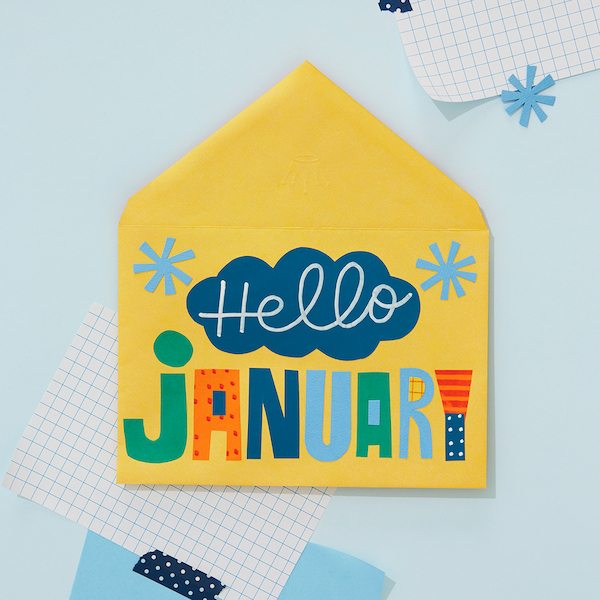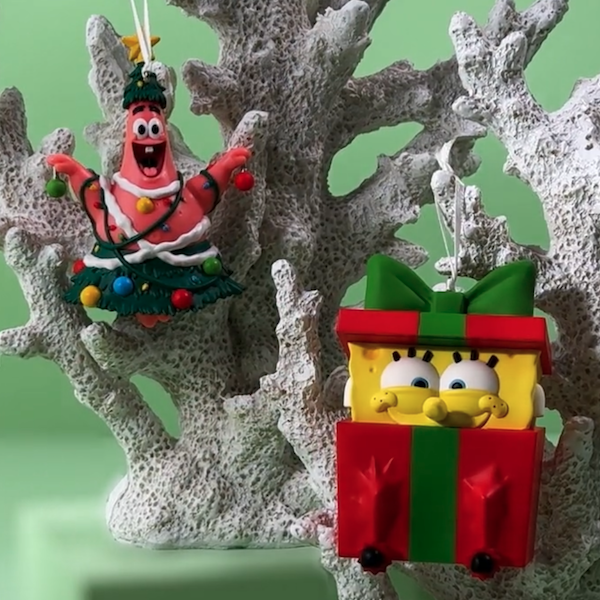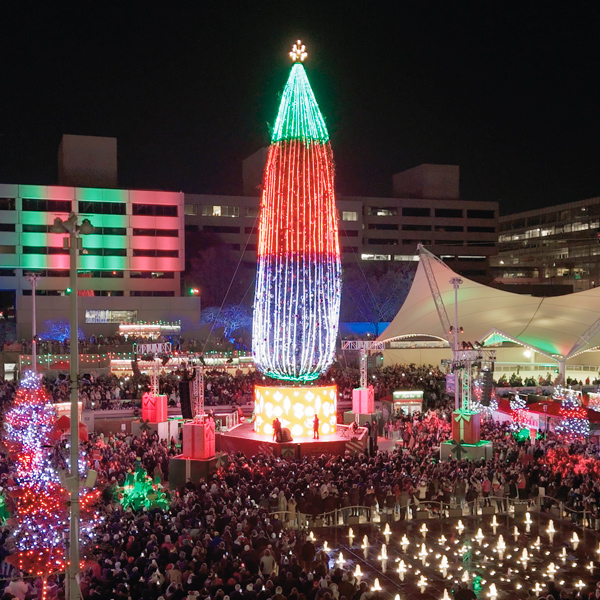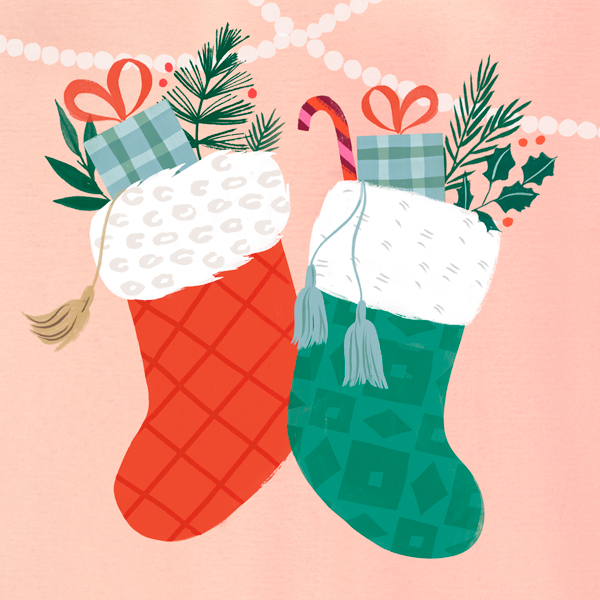What is Disability Pride Month?: Understanding its importance and finding ways to celebrate
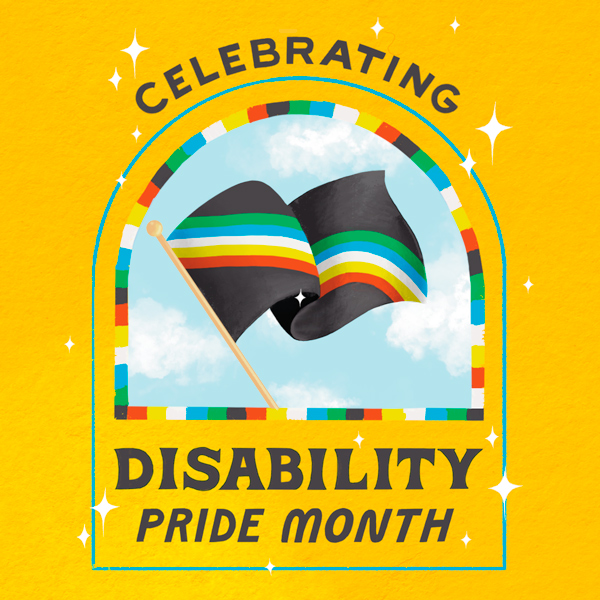
The Americans with Disabilities Act was enacted July 26, 1990 and was the first law in U.S. history to protect people with disabilities from discrimination. To commemorate this pivotal moment, Disability Pride Month is celebrated every July to reflect on the history, to celebrate those who dedicate their lives to the disability rights movement and to continue championing disabled people’s unequivocable right to live a joyful, fulfilling life.
As Disability Pride Month gains even more recognition, we’re excited to share what it’s all about. Keep reading for a brief history as well as quotes from our friends and plenty of ways to honor and celebrate the incredible diversity of the disabled community.
Inspired? Create and share by tagging @HallmarkStores.
The history of Disability Pride Month
Enacted the same year I was born, I’ve never known a United States without the Americans with Disabilities Act. Yet I’ve benefited from this civil rights legislation every day, sometimes in ways I don’t even realize.
For far too long, disability was perceived as a “flaw” or punishment, something that needed to be “fixed,” rather than understood as simply one way of existing in a multiplicity of possibilities.
Similar to the justification of slavery and prohibiting of women’s right to vote, the cultural power of disability to discredit and dehumanize is insidiously pervasive throughout history. Without laws that made discrimination against people with disabilities illegal, employers could legally pay disabled people less or refuse to hire them altogether. Public spaces like restrooms, libraries, restaurants and grocery stores were often inaccessible to wheelchair users, who were also often shut out from societal benefits like public transportation.
The ADA didn’t just break ground—it asserted disabled people’s right to move through the world in ways they had previously been denied. Now evidenced in everything from ramps, tactile paving, accessible pedestrian signals and more, ADA’s impact on our society has been profound.
Disability Pride today: Making disability radically visible
Disability Pride Month is about more than celebrating the passing of a law. Despite our advances, we still have far to go, especially when it comes to dissolving the stigma around disability. While disability pride looks different for everyone, refusing to be ashamed is a central theme, putting the spotlight on disabled joy and doing all we can to make more room for it.
So, part of the work of celebrating disability pride in July is making disability not just visible, but radically visible. Especially for those whose disabilities aren’t as immediately apparent.
“What got me into disability advocacy was a car accident in 2016 when I ‘lost’ my leg. I have a prosthetic now and I don’t even like the phrase ‘lost my leg’ because I have a leg. I just plug it in at night with my cell phone. Someone recently told me about charities that could get me a cover for my leg. But that’s not really something I need. I like the way my prosthetic looks.” – Kayla L.
“The anxiety and depression I live with is actually considered a disability, but for the longest time, I didn’t think of it that way. We’re often taught to ignore or minimize mental health and psychiatric disabilities, especially if you’re a guy.” – Jake G.
“It’s a privilege to have a choice on whether to disclose your disability with others. Others with more visible disabilities don’t always have that option. Some people are surprised when I share that I live with multiple sclerosis, but I always welcome the conversation. Like, yes, I live with this disease. No, you can’t always tell.” – Kara G.
Sometimes it takes acknowledging the history to understand how much it matters that we keep showing up for Disability Pride Month. Keep reading for ideas, quotes and more to help you celebrate and honor this historic moment in our country’s history.
Celebrating Disability Pride through education
Disability all too often gets erased from the narrative. Take Frida Kahlo, for instance— she contracted polio at age 6 and later survived a near-fatal car accident. Harriet Tubman was believed to have suffered from epileptic seizures after being struck by a slave plantation overseer with an iron weight. Both of these hugely influential figures lived with disabilities that informed the way they lived and showed up in the world, yet these facts are often wiped from the narrative.
And this is just one example of disability erasure. Disability Pride Month is a reminder that we still have a lot to learn and uncover. Here are a few starting points for embarking on your own disability education journey.
LEARN more about the disability activists who helped spark and sustain movements for disability rights:
- Justin Dart Jr. (1930-2022) – Known as the “Father of the ADA,” Justin Dart Jr.’s national tours speaking with disabled Americans heavily informed future legislation, including the drafting of the ADA.
- Ed Roberts (1939-1995) – American activist and the first wheelchair user to attend the University of California, Berkeley in 1962.
- Judy Heumann (1947-2023) – As a 22-year-old college graduate, Judy Heumann filed a lawsuit in 1970 against the New York City Board of Education after her disability was used as a reason for being denied certification.
- Bradley Lomax (1950-1984) – A disabled member of the Black Panther party who was involved in disability rights and who helped support the 1977 504 Sit-In.
- Anita Cameron (1965-) – A well-known Black disabled member of ADAPT (formerly known as American Disabled for Attendant Programs Today) who has been arrested over 130 times for nonviolent civil disobedience fighting for disability rights.
- Lois Curtis (1967-2022) – A Black disabled woman, Lois Curtis became the central figure in the 1999 landmark Olmstead decision where the Supreme Court ruled that the ADA prohibited the unnecessary institutionalization of disabled people.
- Jennifer Keelan-Chaffins (1981-) – Disability rights activist and author of the children’s book, “All the Way to the Top: How One Girl’s Fight for Americans With Disabilities Changed Everything.”
EXPLORE the history behind the movements that shaped the disability community:
- 504 Sit-In – A nearly 30-day protest in 1977 of multiple groups that put pressure on President Jimmy Carter’s administration by occupying federal buildings in the U.S.
- ADAPT – Formed from a group of disabled activists who blocked an intersection to force public transportation officials to address the lack of wheelchair-accessible buses, the American Disabled for Attendant Programs Today officially formed in 1983.
- Deaf President Now Protests – Student protest in 1988 after the decision was announced to appoint a hearing president over highly qualified deaf candidates.
- The Capitol Crawl – A 1990 demonstration critical to the passing of the ADA when a group of disabled people abandoned their mobility aids and began crawling up the 78 steps up to the Capitol building.
- Nothing About Us Without Us – A rallying cry first invoked by South African disability activists in the early ‘90s that has since spread worldwide.
IMMERSE yourself in media where disabled people share their own stories:
- Memoirs: “Sitting Pretty: The View from My Ordinary, Resilient, Disabled Body” by Rebekah Taussig (2021) and “The Pretty One: On Life, Pop Culture, Disability, and Other Reasons to Fall in Love with Me” by Keah Brown (2019)
- Documentaries: “Asperger’s Are Us” (2016) and “Crip Camp: A Disability Revolution” (2020)
- Television series: “Love on the Spectrum” (Netflix) and “Atypical” (Netflix)
- Edited collections: “Disability Visibility: First-Person Stories from the Twentieth Century” edited by Alice Wong (2020) and “The Collected Schizophrenias: Essays” by Esmé Weijun Wang (2010)
Ways to celebrate Disability Pride with your community
The celebration or observance of Disability Pride Month is a reminder that the disability community carries a legacy forged on advocacy, determination and progress.
Because disability is more than a description or diagnosis—it’s an identity that connects a diverse and beautiful community. A way to claim and continue a legacy that affirms disabled people’s right to have their humanity fully recognized.
So, whether you’re looking to branch out or find new connections, here are a few ways to celebrate Disability Pride Month in your community.
- Attend a Disability Pride Parade near you. Since the first Disability Pride Parade was held in Boston in 1990, numerous parades and activities have spread throughout the country in places like Chicago and New York City, to name a few.
- Find additional resources, events or discussions through your local library or various civic, arts and religious institutions. Beyond your immediate vicinity, search online for virtual chats, blogs, livestreams and more.
- Donate your time, expertise and knowledge to others, keeping in mind there are many ways to aid the movement that go beyond financial gifts.
- Champion inclusion by ensuring services, meetings and performances are fully accessible.
- Practice avoiding framing disability as a metaphor or insult in conversation and address it when it comes up. Though common, words like “insane,” “lame,” “crazy,” “dumb” and “stupid” were historically used to refer to people with disabilities and can be offensive and hurtful.
“I’ve been helping fundraise for a local nonprofit that puts people with MS on bikes to help restore their function and balance. I’m really proud that I get to be a part of this community.” – Kara G.
Celebrating Disability Pride and positive representation
There are those who may find it challenging to claim pride in disability, often because society has enforced the belief that disability is not something to be proud of. The truth is, we can be proud and still be frustrated. By allowing disability pride to exist in multiple ways, it opens the door for us all.
For example, sometimes pride means actively refusing to adopt the shame society seems eager to instill. This makes disability pride a necessary tool in dismantling discrimination and prejudice against people living with disabilities. Disability Pride Month reminds us that we can take pride in the moments that matter to us, no matter how small.
“As a community, we’re still figuring out what disabled pride looks like in a way that feels authentic, especially when disability is still perceived as something to ‘fix.’” – Kara G.
How to be a better ally and advocate for Disability Pride
When it comes to being an ally for the disabled community, it often starts with understanding ableism. Ableism is the discrimination of and social prejudice against people with disabilities based on the belief that typical abilities are superior.
Sometimes ableism is obvious, such as not having authentic representation of disability in media and television or facing discrimination in the workplace. Other times, it’s not so obvious, such as not recognizing how disability can have benefits or how accommodations can benefit more than the person who requests them.
Want to learn more? Here are a few places to start exploring disability allyship:
- How to Support Friends with Disabilities (There Are More of Us Than You Think)
- Real Stories: Supporting Friends with Anxiety and Depression
- We also suggest reading “Demystifying Disability: What to Know, What to Say, and How to Be an Ally” by Emily Ladau (2021).
“I am proud right now to be giving more grace for myself and others.” – A sister, wife, mother and aunt who works daily to be an ally to loved ones that deal with mental illness, addiction, autism and Attention-Deficit Hyperactivity Disorder.
Letting our Disability Pride shine
This Disability Pride Month, we want to remind you that no one can take away your pride. Disability is part of who we are and embodies the full spectrum of what it means to be human.
So, celebrate by sharing pride in who you are and where you’re going. It starts with us. So, with that…my name is Mercedes and as an able-bodied person living with several psychiatric disabilities, I’m proud I remembered to take my meds this morning. What does your disability pride look like?
You may also like
See more-
Valentine's Day Make little hearts happy this Valentine’s Day 💞
Nothing lights up a little one's face like letting them know just how much they're loved. Okay...except for when they...
-
Calendar Flip Spring Forward: March 2026 Holidays and Observances
Color us excited! From the wearin’ of the green and more sunny fun to colorful Holi festivals and celebrating crayons...
-
Calendar Flip Welcome a New Year: January 2026 Holidays and Observances
HAPPY NEW YEAR! If that hurt your head, you might have celebrated a little too much. When you’re feeling better, we h...
-
Calendar Flip Hello, Love: February 2026 Holidays and Observances
Let’s warm up this cold month with love and connections. From valentine cards to dressing up your pet, this month has...
-
Christmas Christmas gift wrap ideas to match your holiday personality
If you’re anything like me, the holiday season can make you tap into different sides of yourself. Maybe you become th...
-
Gifting 60+ Peanuts® Snoopy gifts to help fans channel their favorite beagle
It was a dark and stormy night in the winter of 2015. I was 17 years old, overwhelmed with AP classes, senior-year st...
-
Christmas 3 Christmas kids craft ideas, plus activities for even more easy holiday fun
From decorating the house to baking cookies, the Christmas season gives us so many opportunities to get creative and ...
-
Christmas The best Christmas gift idea: Bikini Bottom BFFs
Got a bestie who's as silly as you? Or one who's there through all of life's storms with a smile? Then we think this ...
-
Christmas Which Disney Pixar character is your favorite? 🤔
Thankfully, with so many beloved Disney Pixar character Keepsake Ornaments, you won't have to choose a favorite this ...
-
Christmas Not having Cher on your tree? As if! 💅
If you're a Millennial, we predict you will be majorly, totally, butt crazy in love with this Clueless Keepsake Ornam...
-
Christmas 20 vintage Christmas ideas to turn up the charm this holiday season
When I think of my perfect Christmas, vintage vibes are always what come to mind first. Santa’s sleigh in a dreamy wi...
-
Christmas 20+ ideas to help you plan your trip to the Hallmark Christmas Experience
Ever wanted to step inside of a picture-perfect Hallmark Christmas movie? Or travel to a place where you could immers...
-
Christmas Sit fireside with the cutest snowfolks around!
A campfire might seem like the least likely place to find a few snowmen hanging out, but if it's cold enough, even th...
-
Christmas With so much magic, we can’t choose a favorite!
Every Keepsake Ornament is magical, but our ornaments with light, sound and music are in a class all their own. From ...
-
Christmas Stocking stuffer ideas for literally everyone on your list
The stocking stuffer struggle is real. By the time you’ve bought your main presents, you feel like you’re all out of ...
-
Christmas You love Keepsake Ornaments…we love rewarding you! 🥳
Collecting Keepsake Ornaments isn't just a hobby for you—it's a passion! And that kind of enthusiasm is something we ...
-
Christmas 60+ Christmas decorating ideas to deck your halls—and every other space!
If you’re searching for Christmas decorating ideas to make all your spaces extra jolly and put you in a merry mood, y...
-
Christmas Dance your way to Christmas morning 🦛🎄
Keep little ones giggling and grooving all holiday break-long with this musical dancing Christmas hippo plush! Does i...
-
Winter Lean into the Season: winter ideas to make the season bright and extra cozy
There are two types of people in this world: those who love winter and those who’d endure an eternity of wearing wet ...
-
Christmas What happens when you put a Keepsake Artist in front of the camera? 🤔
Keepsake Artists are masters of turning everyday moments into cherished Christmas memories, in the form of beautifull...



